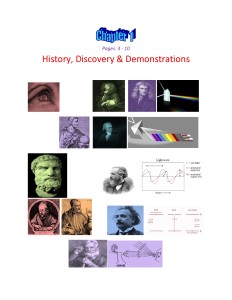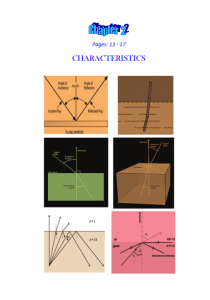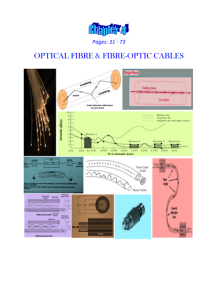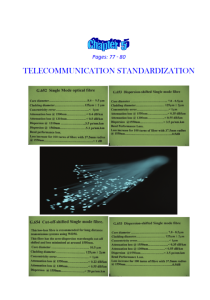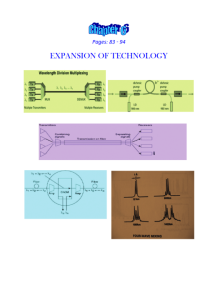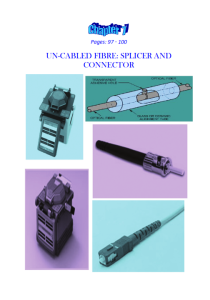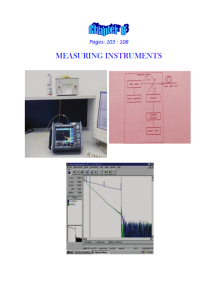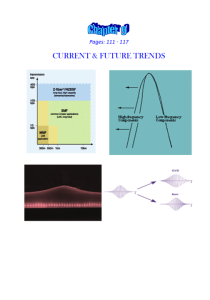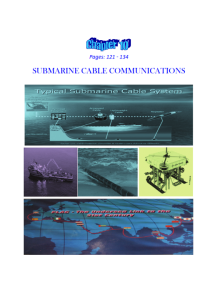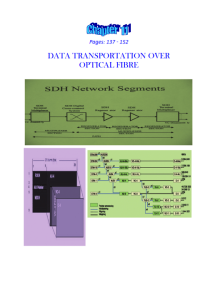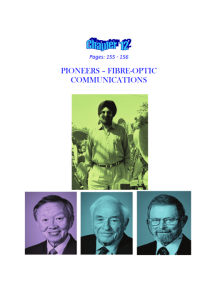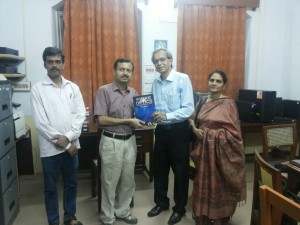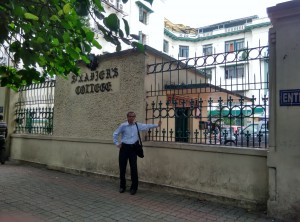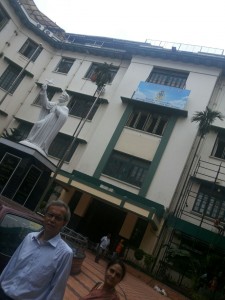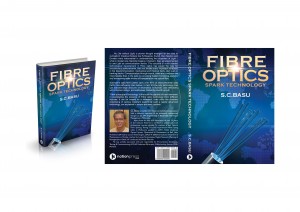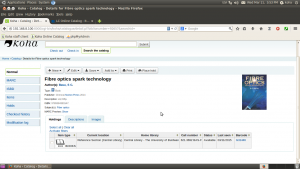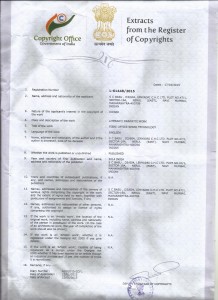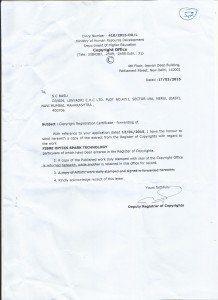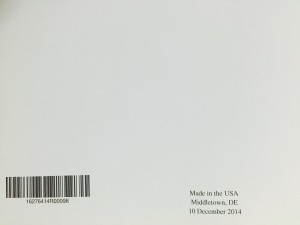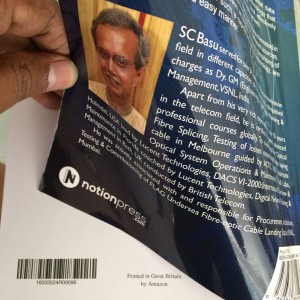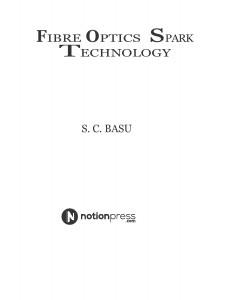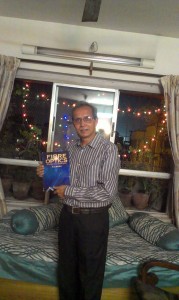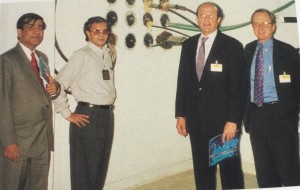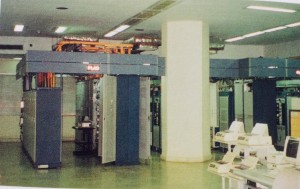Routing & Packet Switching
Basically, Router selects the path/paths (including PSTN and Internet) for intra/inter network traffic.
To start with an analogy – A car driver selects the route using GPS and then follows that preassigned path as selected by GPS. In another case, for a VVIP, the associated driver follows the specially defined route as guided by the VVIP team understanding security and other related pros and cons on the VVIP route. The first case is like Packet -switched network where logically addressed small packets traverse across preassigned different digital networks through various nodes and follow networking protocols from origin to final destination. In the second case, is like Circuit-switched dedicated path being selected before actual traffic commences.
Circuit switching: Users establish a dedicated circuit or channel between the source and the destination before they can connect. It is mostly preferred for voice and video calling systems.
Optical routing: Provides a circuit-switched dedicated connection based on out-of-band signalling control, paradigm – GMPLS. Control information and data transfer follow two separate paths. GMPLS allows the participation of Layer 3 (the network layer) devices within the signalling circuits. These devices stand to benefit from path protection as well as the reestablishment of MPLS within the circuit.
Optical Packet Routing: Here O/E converter in the router converts incoming data packets from optical to electrical form for processing. Similarly, outgoing data passes through E/O converters before traversing the next optical link in the network. An optical packet switch is similar to an electronic router but does not require O/E and E/O converters. Optical routing does not solve the energy problem, and neither conventional nor slow-light delay lines do away with the storage problem. In particular, planar integrated optical buffers (including slow-light buffers) occupy a larger chip area than their electronic equivalents, dissipate more power, and are limited in capacity to a few IP packets. Optical-fibre-based buffers have low power dissipation but are bulky. Instead, the data remains in optical form throughout the network, including the switches. Optics is well suited for transmission of data, and electronics is well suited to buffering and manipulation of data. Its operation is based on dedicated wavelength, being assigned for each path from source to the destination and obeys the principle of wavelength routing.
Packet routing: Here logically addressed packets are forwarded in the network or over multiple networks on establishing a defined path from the source to the ultimate destination using intermediate nodes. Data plane forwards IP packets as in the case internet over same established path according to topology information and using the forwarding table – Source address, Destination address and Total number of packets. So, data with routing information follow the same assigned path hop by hop from the source to its final destination and it’s called Datagram-based architecture followed by IP and MPLS (Multiple Pre-configured Label Switching). In another approach – Virtual circuit switch, the assembled and numbered packets travel across a predefined route, sequentially used by X.25 or in ATM.
Optical Packet Switching: The worldwide multi-service transport architecture of choice had conceptualized after being inspired by the emerging convergence of packet (IP/MPLS), multi-layer network control-plane, induction of reconfigurable DWDM. It improves overall network operational performance. Here, I would like to mention generally, Router has inter-network i.e., IP layer3 functionality while Switch functions intra-network i.e., uses MAC or physical address. In OPS, variable length of packets can be switched in the optical domain. But OPS is not feasible currently due to lack of optical RAM technology.
Optical Burst Switching (OBS): This technology is a compromise between Optical Packet Switching (OPS) and Optical Circuit Switching (OCS). OBS-control information is sent separately in a reserved optical channel well in advance of the data payload. Data being processed electronically, allows time to setup an optical light path to transport the soon-to-arrive payload, called as delayed reservation. OBS technique provisions dynamically sub-wavelength details by optimally combining electronics and optics. OBS considers sets of packets with similar properties called bursts and provides more bandwidth flexibility than wavelength routing. Data packets are aggregated into data bursts at the edge of the network to form the data payload. It offers More efficient bandwidth utilization.
Digital World Fuels Undersea Cable Exploration
Digital age means the coming of the internet and was first introduced in the 1990s spreading digital revolution globally. It brought the development of the web 1.0 platform which allowed users to find the desired information but was not possible to share that with others over the web as and when required. Then came Digital Marketing in the year 1990. Advertising agencies could enjoy clickable web-ad banner which went live first in 1993 and the digital marketing era commenced journey. Then came Web 2.0, where people became more active users. Web 2.0 allowed users to interact with other users and business destinations. The internet became popular as ‘super information highway’. The First e-commerce transaction was done over the internet in 1994. Yahoo took birth also in 1994 and received a thumping 1 million hits within a year! Yahoo search engine has changed the definition of digital marketing and the traders had tried to optimize their websites for a better rank. In 1996, HotBot, LookSmart search engines, Alexa – a virtual assistant technology largely based on a Polish speech synthesiser were launched. The year 1997 embraced first social media site Sixdegrees.com. Precisely 1998 could easily be addressed as the golden year for digital marketing with the advent of launching very powerful search engines Google along with Microsoft’s MSN, and Yahoo’s Yahoo web search. The internet bubble and alike smaller search engines were abolished in 2000 and created more space, opportunities for the giants to explore the business. Within a couple of year in 2002, the professional social media network LinkedIn was launched. In the very next year 2003 – WordPress software and MySpace, a social networking service were released. Digital destination was fortunate to enjoy Gmail activities in 2004, and the magical social media – Facebook live, Google went public.
YouTube was launched in 2005. The year 2006 recorded a golden summit as search engine traffic was reported to have grown to about 6.4 billion in a single month. In the same year Microsoft launched an MS live search and Twitter was also launched simultaneously. Amazon e-commerce sales had crossed near about $10 billion in 2006 itself. Spotify, a Swedish audio streaming and media services provider was founded also in 2006. Tumblr, a free social networking website to post multimedia contents for their registered users was launched in 2007. Mr. Steve Jobs, Mobile giant Apple Inc. CEO unveiled its first product iPhone with multitasking facilities in 2007. Moreover,
premium web streaming service Hulu, an US based provider offering video content from its library was launched in 2008 and Groupon an American global marketplace went live in the same year. In 2009, Google launched Instant for real-time search engine that predicts what people are searching with results as users’ type. Google introduced products like AdWords or Google Ads for advertising space in the Google search and AdSense to sell ad space to business. In 2010, WhatsApp was launched along with Google Buzz, a social networking and messaging tool. Other networking tools as Google+ and Google Panda were launched in 2011. Social media was benefited in 2012 as Google launched Google knowledge graph services for enhancing google search engine’s results. In 2013, Yahoo acquired Tumblr. The mobile and smartphone users had superseded the PC users, people were gifted with Facebook messenger and Facebook also acquired WhatsApp in 2014. Apple Inc. launched iWatch in 2015. Nonfungible token or popularly known as NFT, a non-interchangeable unit of data stored on a Blockchain was also launched in 2015 for trading. The NFT in the Blockchain network, a public platform records the transaction and it provides transparency of the sale. LinkedIn was acquired by Microsoft in 2016. The cookie, another significant milestone in the field of digital marketing though basically was created by Lou Montulli to record user habits in 1994 cookies captured headlines in 2017. In fact, browser cookies also called web cookies comprises small blocks of data created by the user’s web server, placed on the devices used to access websites. Popular social
networking sites – Facebook, YouTube, Instagram, Twitter, Reddit, etc whosoever were launched between 2004 to 2010 had redefined or premiered their certain services and stretched the definition of the social media market in 2017. Social media new users had gone almost 1 million every day during 2017. The year 2018 had recorded over 4 billion marks of internet users. Praiseworthy developments were noticed yearly in the activities of namely artificial intelligence, Blockchain, Consumer policy and product
safety, Digital government, Economy and Telecom sectors. Then COVID-19 pandemic had encouraged vital usage for working, learning, accessing basic services online and had accelerated the use of internet during this critical situation. The internet users surged to 4.9 billion in 2021. Working people have to opt work-from-home (WFH) worldwide and had altered the modus operandi of many organizations. The explosion of IoT-enabled devices, advanced machine learning, complex Artificial Intelligence, and Virtual Reality are expected in near future. The 6G era in the Digital World is expected by 2030 where network will provide large bandwidth, low latency and high speeds. and will pave the way of the future providing Multi-Access Edge Computing. During digital revolution globally, people can interact using avatars (non-fungible
tokens – NFTs) that can apply for job, building careers in the companies. More people and companies have been using cloud-based services for their business and store everything online instead of on a single device during current Cloudy Days.
The continuous advancement and demand for more bandwidth to keep pace with the Digital World ignited new fury in further exploration of undersea-cable technology. As on date nearly all voice and Internet traffic, including essential military transmissions and financial transactions, traverse through undersea fibre-optic cables. The two-thirds of the Earth covered by water has only been explored for developing security strategies. Precisely the ocean and the seabed remain a mystery. Over 80% of the ocean is yet to be explored. In the Mediterranean south of Cyprus, a few neighbouring countries have been vying for ownership of recently discovered oil fields, while in the South China Sea, China is building islands on partially submerged reefs and populating them with military forces and surveillance systems to control oil
and gas in nearby sea beds, which are also claimed by the Philippines, Vietnam, Taiwan, and Malaysia. But more importantly around 95% of voice and Internet traffic along with military transmissions and more than $4 trillion per year financial transactions passes through over 400 transoceanic fibre-optic cables laid along the seabed. Basically, in the 1840s, the potential of subsea cables was conceived. Samuel Morse had telegraphed using a submerged insulated wire at the water of New York Harbour in 1842. The first commercial telegraph cable was laid in 1850 by the English Channel Submarine Telegraph Company between England and France but was cut weeks later by fishermen accidentally. The Atlantic Telegraph Company established the first telegraph communications across the Atlantic Ocean in 1858 and the first official telegram had been transmitted between two continents – at a rate of a single
character every two minutes was – a letter of congratulations from Queen Victoria of the United Kingdom to President of the United States James Buchanan on August 16, 1858. The second cable was laid in 1865.
The first trans-Pacific cables completed, had linked the US mainland to Hawaii in 1902 and Guam to the Philippines in 1903. The first-generation undersea telephone cable, TAT-1, was laid between 1955 and 1956 and was able to carry 35 simultaneous telephone calls. TAT-8, the first fibre-optic subsea cable constructed in 1988 by a consortium of AT&T, France Telecom, and BT, had enhanced capacity at a higher speed 280 Mbps and was withdrawn from service in 2002. Those submarine fibre-optic cables required repeaters around at every 100 Km apart to boost the signal along the length of the whole path. Use of Optical amplifiers in the submarine networking had significantly
boosted signals over regular intervals while traversing transoceanic routes. TAT12/13, unique in three senses – had incorporated with maiden self-healing ring structure involving two stretches of cable across the ocean bed, inaugural user of fully backed up self-healing loop and initial deployer of Erbium-doped fibre amplifier (EDFA) connecting US, UK and France. TAT 12/13 carried 2 fibre pairs with each 5 Gbps capacity – on each fibre pair could transport a single 5 Gbps optical signal aggregating 10 Gbps capacity. TAT-14 using DWDM technology deployed four pairs of fibres wherein two pairs as active and the rest as backup connecting US and EU in a ring topology. Each fibre in every pair carried 16 wavelengths in one direction where each wavelength capacity is up to STM 256 using payload 38,486.016 Mbps out of
39,813.12 Mbps total Bit Rate (speed) i.e., 16128*E1 or 16128*30 = 483,840 voice channels. Use of optical Cross Connect (OXC), Optical Add-drop Multiplexer (OADM). The latest Subsea cables have enriched in capacity with the adoption of Dense Wavelength Division Multiplexing or DWDM, Space Division Multiplexing (SDM) technology and use very high-quality fibres of typically G.654A-D standard designed to offer attenuation in the range of 0.15db/km to 0.17db/km where each wavelength operates at the rates of several Gbps. It enabled the information-carrying capacity of a submarine cable to be maximized. The Open Cables model resulted new upgradation in the submarine networking industry and service providers had a broader choice of SLTE technology and vendors. Submarine systems, are now enormously capable of more than 80 times their original design capacity with upgradation of SLTE technology. Submarine Line Terminal Equipment (SLTE) and Power Feed Equipment (PFE) of a submarine cable system are installed at the cable landing station as per tradition. In some specific cases, the PFE is installed at a cable landing station, while the SLTE has been shifted to in another location as in a central office or at the data centre. PFE feeds a constant current to
stabilize the repeater characteristics and transmission performance. Though PFE is installed in the terminal stations, it receives the return path through earth and sea. PFE feeding a Google’s Virginia-to-France Dunant cable is currently the largest capacity cable, capable of providing 250 Terabits/s using a 12-fibre pair Space-division Multiplexing (SDM) design. Cloud and hyperscale companies as Facebook, Google, Microsoft, and Amazon have been increasingly investing in subsea cables, either joining with some consortiums or opting private projects. The bit rate per wavelength has increased from 565 Mbit/s in the early 1990s to 100 or more Gbps today. Medusa submarine cable is in the process of securing authorizations from the state of Portugal
to bring 480 Terabits/s to Sines city, Portugal. The latest super high capacity cable system will connect Portugal, Morocco, Spain, Algeria, France, Tunisia, Italy, Greece and Egypt. Green Submarine Fibre-optic Cable System is equipped with sensors at regular intervals along the entire length of the cable. There are three basic sensor types: temperature, pressure, and three-axis acceleration sensors. Together, these sensors enable measurement of seismic events, tsunamis, sea level change, and environmental temperature. The ability to measure environment conditions in the deep ocean gives its unique name as – Green System. Green systems are differentiated from mixed-use systems in that sensors are attached nominally once per repeater span along the entire length of the system, and not only at a few selected locations. The development of Green System has been supported by the Intergovernmental Oceanographic Commission (IOC) of UNESCO and the International Telecommunication Union (ITU). All Optical Networking (OTN) are the next-generation industry-standard protocol providing more efficient, transparent and manageable services onto optical-way design in the new generation undersea cables. The life span of submarine cables is controlled by two factors. One is a physical end because it does not function anymore and needs to be dismantled, the other one its economic end of life where it is considered not worth to continue expenditure to run as a still functioning cable. Political issues also block undersea cable operations. The first generation of fibre optic submarine cables began a revolution for
telecommunication. These electro-optical systems, though state-of-the-art in their time, have now been surpassed by purely optical systems with vastly greater capabilities. Because the second-generation systems are purely optical, using in-line lasers to amplify the signals rather than electro-optical regenerators, they may be upgraded by changing only the terminal equipment the bandwidth may be increased by 1-2 orders of magnitude. This versatility coupled with the current underutilization of existing fibre capacity (estimated at less than a 10%), has led to the decision of
telecommunications companies to retire their first-generation fibre optic systems more than decade earlier than originally planned. These fibre-optic telecommunications cables being retired by the telecommunication industry are now being offered for scientific reuse by AT&T, and are in discussions with the overseas owners. These Cable Systems include three Pacific systems—Hawaii-4, Trans-Pacific Cable-3 (TPC3), Guam-Philippine-Taiwan (GPT)—and four Atlantic Systems—Trans-Atlantic-8 (TAT-8), TAT-9, TAT-10, and TAT-11. IRIS Ocean Cable, Inc. (IOC), currently owns two retired coaxial telephone cables being used for science exploration: TPC-1 (GuamJapan) with the University of Tokyo (Kasahara et al., 1998) and Hawaii-2, which serves the NSF-funded Hawaii-2 Observatory (H2O).
Glimpses of 2nd Edition in the Pipeline
The additional Chapter in the 2nd edition focuses: Scope of Fibre Optics on Optical Sensor and its application in Bio-medical field basically as measurement solutions where electrical and electronic circuits do not function.
Fibre Optic Sensors: Fibre-optic sensing paves way as very impressive measurement solutions where electrical and electronic circuits cannot function. Fibre-optic sensors function depending on the characteristics of Photons (light). Photons do not interfere with electrons, except with other photons under specific conditions. Optical fibres are immune to electromagnetic and radio- frequency signals, chemically inert, nontoxic and secure. Apart from tremendous impact in the communication fields, the unmatched characteristics make optical fibres ideal for real- time use during diagnostic imaging with MRI, CT, and other Cardiac Imaging systems. Fibre-optic sensing devices spread through multiple industries including medical, aerospace, automotive, civil, manufacturing and energy.
Healthcare sectors worldwide are concerned with advanced biomedical instrumentation to enable patient diagnosis, monitoring, and treatment more efficiently. The scope of fibre optics is well established in Endoscopy and Imaging applications. The intrinsic physical characteristics of optical fibres also make them extremely useful in the field of biomedical sensing. Multimode fibres bearing less than 250μm diameter can be inserted directly into hypodermic needles and catheters. Fibre-optic sensors (FOS) made with step-index or graded-index fibres (<250μm diameter) can perform remote multipoint and multi- parameter sensing. The ability of optical fibre to withstand severe vibration, shock and other mechanical stress ably suits the requirements for military applications especially in Sensor and Surveillance Systems operated in the defence. In addition, Fibre-optic Guided (FOG) weapons have a wide range of use in military applications.
——
——
——
Use of Infrascanner© 2000: Some concussions may cause to lose consciousness, but it is possible to have a concussion and is not realized by the person suffered. Failure to detect and treat intracranial hematoma (brain bleeding) within the first hour can yield catastrophe if a Computed Tomography (CT) Scan facility is not available in places like resorts at high altitude, on physically un-accessible zone, or in the war field. In such cases, a ha n d h e l d t o o l l i k e Infrascanner© 2000 can be a very useful medical sensing and detecting device to efficiently identify patient’s emergency for immediate referral to a CT scan and neurosurgical mediation, in turn provides faster diagnosis to avert tragedies.
It is a light-weight diagnostic/screening device, includes a sensor and a cradle. It uses Near- Infrared (NIR) technology to screen patients for intracranial bleeding. The sensor of Infrascanner© 2000 includes an eye safe Class I 808-nm-emitting laser diode and a silicon light detector. The light to and from the laser and detector are optically coupled to the patient’s head through two disposable light guides. Infrascanner© 2000 is successively placed in the left and right frontal, temporal, parietal, and occipital areas of the head for a total of eight measurements and the absorbance of light at selected wavelengths is recorded. It compares the left and right sides of the brain in four different areas. Normally, the brain’s absorption should be symmetrical when comparing left and right sides.
Exactly after 50 years, I stepped in St. Xavier’s College, Kolkata to gift my book FIBRE OPTICS SPARK TECHNOLOGY to the Central Library of this heritage college! I & my family were overwhelmed by the generous hospitality extended on this occasion! Prof. Palit, Head of Physics Dept. received my book in the presence of Dr. Chinmoy Mukherjee, Chief Librarian, Central Library. Prof. Palit advised Dr. Mukherjeet to present the bookto the students as an overview & reference on fibreoptic technology. I was very much nostalgic to visit my parent institution after 5 decades!
Fulfilment
Books sold through Online Stores
Print Edition – INDIA
https://notionpress.com/read/fibre-optics-spark-technology-1295291
http://www.amazon.in/Fibre-Optics-Spark-Technology-S-C-Basu/dp/9384381543/ref
http://www.flipkart.com/fibre-optics-spark-technology-english/p/itmefbeyyxdqdtfk
http://www.infibeam.com/Books/fibre-optics-spark-technology-s-c-basu/9789384381547.html
Print Edition – INTERNATIONAL
http://www.amazon.com/Fibre-Optics-Spark-Technology-Basu/dp/9384381543/ref
https://www.amazon.co.uk/Fibre-Optics-Spark-Technology-Basu/dp/9384381543
E-Book
https://play.google.com/store/books/details/S_C_Basu_Fibre_Optics_Spark_Technology?id=ZYc1BQAAQBAJ
http://www.amazon.com/Fibre-Optics-Spark-Technology-Basu-ebook/dp/B00PCA957W/ref![]()
https://itunes.apple.com/us/book/fibre-optics-spark-technology/id947274310?mt=11
https://www.scribd.com/book/245715375/Fibre-Optics-Spark-Technology
https://store.kobobooks.com/en-US/ebook/fibre-optics-spark-technology
https://www.rockstand.in/ebooks/fibre-optics-spark-technology/
Please follow the link on youtube to enjoy audio-visual effect
https://www.youtube.com/results?search_query=Fibre+Optics+Spark+Technology+by+S.+C.+Basu
Screenshot – It is selected as a Reference Book in the Central Library, Burdwan University, West Bengal
Screenshot of the page of Print Edition – International
Made in the USA (Amazon Warehouse, Middletown, Delaware, USA)
Printed in Great Britain by Amazon
Please logon www.scbasu.com and then click respective Seller Site of your choice to procure the book online.
Buyers may also click Publisher Notion Press Link:
https://notionpress.com/read/fibre-optics-spark-technology-1295291
Click “Visit Seller Site” of respective Online Store of choice to buy the Book
With my Masterpiece – Fibre Optics Spark Technology
